 W
WYellowstone National Park is an American national park located in the western United States, largely in the northwest corner of Wyoming and extending into Montana and Idaho. It was established by the U.S. Congress and signed into law by President Ulysses S. Grant on March 1, 1872. Yellowstone was the first national park in the U.S. and is also widely held to be the first national park in the world. The park is known for its wildlife and its many geothermal features, especially Old Faithful geyser, one of its most popular. While it represents many types of biomes, the subalpine forest is the most abundant. It is part of the South Central Rockies forests ecoregion.
 W
WThe following articles relate to the history, geography, geology, flora, fauna, structures and recreation in Yellowstone National Park.
 W
WAbronia ammophila, the Yellowstone sand verbena, or Wyoming sand verbena, is a plant unique to Yellowstone National Park lakeshores and is endemic to the park.
 W
WRobert Adams Jr. was an American diplomat and politician from Pennsylvania who served as a Republican member of the U.S. House of Representatives for Pennsylvania's 2nd congressional district from 1893 to 1906. He served as the United States Minister to Brazil from 1889 to 1890 and as a member of the Pennsylvania State Senate for the 6th district from 1883 to 1885.
 W
WYellowstone National Park is home to four amphibian species and seven species of reptiles. None of the species are endangered or threatened. The glacial nature of and dry conditions in Yellowstone are likely responsible for the relatively low number of amphibian and reptile species in Yellowstone,.
 W
WAngling in Yellowstone National Park is a major reason many visitors come to the park each year and since it was created in 1872, the park has drawn anglers from around the world to fish its waters. In 2006, over 50,000 park fishing permits were issued to visitors. The park contains hundreds of miles of accessible, high-quality trout rivers containing wild trout populations—over 200 creeks, streams and rivers are fishable. There are 45 fishable lakes and several large lakes are easily accessible to visitors. Additionally, the park's remote sections provide anglers ample opportunity to visit rivers, streams, creeks and lakes that receive little angling pressure. With the exception of one specially designated drainage, all the park's waters are restricted to artificial lures and fly fishing. The Madison, Firehole and a section of the Gibbon rivers are restricted to fly fishing only.
 W
WYellowstone National Park in the northwest United States is home to a large variety of mammals, birds, fish, reptiles and amphibians, many of which migrate within the Greater Yellowstone Ecosystem. These animals are a major park attraction.
 W
WThe bibliography of Yellowstone National Park identifies English language historic, scientific, ecological, cultural, tourism, social, and advocacy books, journals and studies on the subject of Yellowstone National Park topics published since 1870 and documented in Yellowstone related bibliographies and other related references.
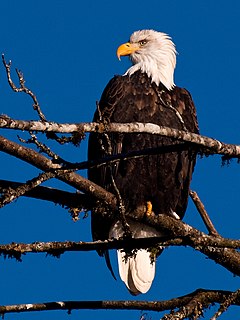 W
WThis is a comprehensive listing of the bird species recorded in Yellowstone National Park, which is mostly in the U.S. state of Wyoming and also extends into Idaho and Montana. This list is based on one published by the National Park Service (NPS) dated May 7, 2020 which contains 284 species. An additional 16 species have been added from eBird up to mid-July 2020.
 W
WBlack Sand Basin is one of a grouping of a geothermal hot springs and geysers located in the Upper Geyser Basin of Yellowstone National Park, Wyoming. The spring is too hot to use as a mineral bath as its scalding 200+ degree Fahrenheit water has proven to be fatal. In the winter, there is a marked ski trail that runs from the Old Faithful Visitor Center to Black Sand Basin
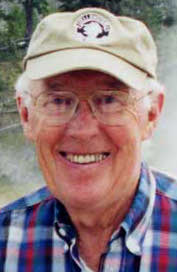 W
WThomas Dale Brock is an American microbiologist known for his discovery of hyperthermophiles living in hot springs at Yellowstone National Park. In the late 1960s, Brock discovered high-temperature bacteria living in the Great Fountain region of Yellowstone, and with his colleague Hudson Freeze, they isolated a sample they named Thermus aquaticus. "Life at High Temperatures", a 1967 article summarizing his research, was published in the journal Science and led to the study of extremophiles, organisms that live in extreme environments. By 1976, T. aquaticus was found useful for artificially amplifying DNA segments. Brock's discoveries led to great progress in biology, contributed to new developments in medicine and agriculture, and helped create the new field of biotechnology.
 W
WHarry W. Child (1857–1931) was an entrepreneur who managed development and ranching companies in southern Montana. He was most notable as a founder and longtime president of the Yellowstone Park Company, which provided accommodation and transportation to visitors to Yellowstone National Park from 1892 to 1980. Child was, with park superintendent and National Park Service administrator Horace Albright, singularly responsible for the development of the park as a tourist destination and for the construction of much of the park's visitor infrastructure.
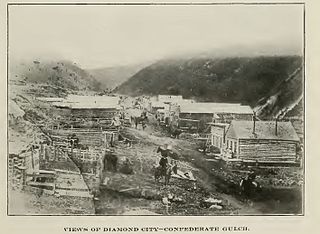 W
WThe Cook–Folsom–Peterson Expedition of 1869 was the first organized expedition to explore the region that became Yellowstone National Park. The privately financed expedition was carried out by David E. Folsom, Charles W. Cook and William Peterson of Diamond City, Montana, a gold camp in the Confederate Gulch area of the Big Belt Mountains east of Helena, Montana. The journals kept by Cook and Folsom, as well as their personal accounts to friends were of significant inspirational value to spur the organization of the Washburn-Langford-Doane Expedition which visited Yellowstone in 1870.
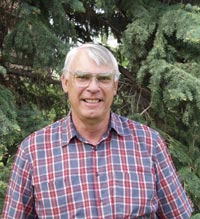 W
WDr. Don Gardner Despain is an American botanist, plant ecologist and fire behavior specialist, who specialized in the flora of Yellowstone National Park.
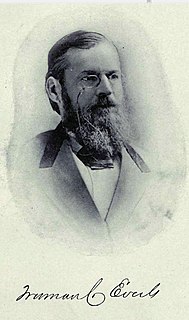 W
WTruman C. Everts was the first federal tax assessor for the Montana Territory and a member of the 1870 Washburn–Langford–Doane Expedition, which explored the area which later became Yellowstone National Park. He became lost in the wilderness for 37 days during the expedition and a year later became more widely known after writing about his ordeal for Scribner’s Monthly.
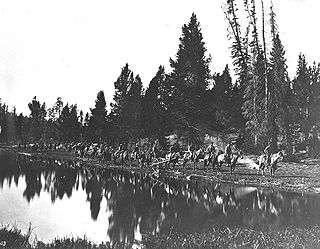 W
WThis list summarizes the major expeditions to the Yellowstone region that led to the creation of the park and contributed to the protection of the park and its resources between 1869 and 1890.
 W
WGardiner station was a railway station in Gardiner, Montana, serving the Northern Pacific Railway. Gardiner was on the southern terminus of a branch line from Livingston and is at the northern border of Yellowstone National Park. Passengers would be shuttled to/from the park via stagecoach. The station was designed by Robert Reamer in the rustic style. Passenger service eventually diminished from Gardiner, and the station was torn down in 1954.
 W
WGrant Village is a developed area of Yellowstone National Park, offering lodging, camping and other visitor services. It is located on the southwest side of Yellowstone Lake, about 2 miles (3.2 km) south of West Thumb. Grant Village was developed by the National Park Service and concessioners under the Mission 66 program, in an effort to relocate land-consuming visitor services and accommodations away from the park's major attractions and sensitive features. Grant Village was planned to allow the removal of development encroaching on the thermal basin at West Thumb. Originally named "Thumb Bay," the development was first proposed in 1955 by Park Service director Conrad L. Wirth to accommodate 2500 visitors with restaurants, gas stations, concessions and a marina.
 W
WThe Greater Yellowstone Ecosystem (GYE) is one of the last remaining large, nearly intact ecosystems in the northern temperate zone of the Earth. It is located within the northern Rocky Mountains, in areas of northwestern Wyoming, southwestern Montana, and eastern Idaho, and is about 22 million acres. Yellowstone National Park and the Yellowstone Caldera 'hotspot' are within it.
 W
WThe Hayden Geological Survey of 1871 explored the region of northwestern Wyoming that later became Yellowstone National Park in 1872. It was led by geologist Ferdinand Vandeveer Hayden. The 1871 survey was not Hayden's first, but it was the first federally funded, geological survey to explore and further document features in the region soon to become Yellowstone National Park and played a prominent role in convincing the U.S. Congress to pass the legislation creating the park. In 1894, Nathaniel P. Langford, the first park superintendent and a member of the Washburn-Langford-Doane Expedition which explored the park in 1870, wrote this about the Hayden expedition:We trace the creation of the park from the Folsom-Cook expedition of 1869 to the Washburn expedition of 1870, and thence to the Hayden expedition of 1871, Not to one of these expeditions more than to another do we owe the legislation which set apart this "pleasuring-ground for the benefit and enjoyment of the people"
 W
WFrank Jay Haynes, known as F. Jay or the Professor to almost all who knew him, was a professional photographer, publisher, and entrepreneur from Minnesota who played a major role in documenting through photographs the settlement and early history of the great Northwest. He became both the official photographer of the Northern Pacific Railway and of Yellowstone National Park as well as operating early transportation concessions in the park. His photographs were widely published in articles, journals, books and turned into stereographs, and postcards in the late 19th and early 20th century.
 W
WWhen Yellowstone National Park was created in 1872, gray wolf populations were already in decline in Montana, Wyoming and Idaho. The creation of the national park did provide protection for wolves or other predators, and government predator control programs in the first decades of the 1900s essentially didn't eliminate the gray wolf from Yellowstone. The last wolves were killed in Yellowstone in 1926. After that time, sporadic reports of wolves still occurred, but scientists confirmed that sustainable wolf populations had been extirpated and were absent from Yellowstone during the mid-1900s.
 W
WWilliam Henry Jackson was an American painter, Civil War veteran, geological survey photographer and an explorer famous for his images of the American West. He was a great-great nephew of Samuel Wilson, the progenitor of America's national symbol Uncle Sam.
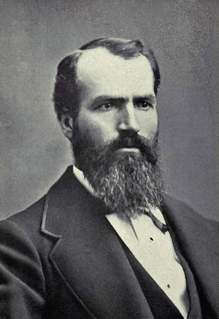 W
WNathaniel Pitt Langford was an American explorer, businessman, bureaucrat, vigilante and historian from Saint Paul, Minnesota who played an important role in the early years of the Montana gold fields, territorial government and the creation of Yellowstone National Park.
 W
WThe Leopold Report, officially known as Wildlife Management in the National Parks, is a 1963 paper composed of a series of ecosystem management recommendations that were presented by the Special Advisory Board on Wildlife Management to United States Secretary of the Interior Stewart Udall. Named for its chairman and principal author, zoologist and conservationist A. Starker Leopold, the report proved influential for future preservation mandates.
 W
WThe fish of Yellowstone National Park, in Idaho, Montana and Wyoming (U.S.), include 13 native fish species and six introduced or non-native species. Angling for trout has been a pastime in the park since its creation and trout species dominate the fish inhabiting the park. When Yellowstone National Park was created in 1872, 40% of the park's waters were barren of fish, including most alpine lakes and rivers above major waterfalls. Only 17 of 150 lakes held fish.
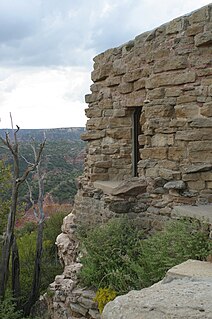 W
WHerbert Maier was an American architect and public administrator, most notable as an architect for his work at Yosemite, Grand Canyon and Yellowstone National Parks. Maier, as a consultant to the National Park Service, designed four trailside museums in Yellowstone, three of which survive as National Historic Landmarks. Maier played a significant role in the Park Service's use of the National Park Service Rustic style of architecture in western national parks.
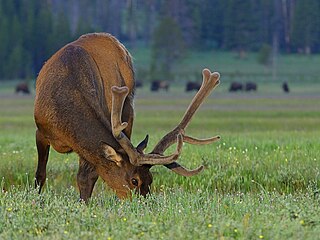 W
WThere are at least 67 species of mammals known to live within Yellowstone National Park, a 2,219,791 acres (898,318 ha) protected area in the Rocky Mountains of Wyoming, Montana, and Idaho. Species are listed by common name, scientific name, typical habitat, and relative abundance.
 W
WThere are at least 50 small mammal species known to occur in Yellowstone National Park.
 W
WMammoth is a census-designated place in Park County, Wyoming, United States, comprising Fort Yellowstone and Mammoth Hot Springs in Yellowstone National Park. As of the 2010 census, its population was 263.
 W
WJudge John W. Meldrum was a carpenter, a Wyoming politician and the first U.S. Commissioner in Yellowstone National Park, a position he held for 41 years (1894–1935).
 W
WThe Nez Perce in Yellowstone Park was the flight of the Nez Perce Indians through Yellowstone National Park between August 20 and Sept 7, during the Nez Perce War in 1877. As the U.S. army pursued the Nez Perce through the park, a number of hostile and sometimes deadly encounters between park visitors and the Indians occurred. Eventually, the army's pursuit forced the Nez Perce off the Yellowstone plateau and into forces arrayed to capture or destroy them when they emerged from the mountains of Yellowstone onto the valley of Clark's Fork of the Yellowstone River.
 W
WPhiletus W. Norris was the second superintendent of Yellowstone National Park and was the first person to be paid for that position.
 W
WThe North Entrance Road Historic District comprises Yellowstone National Park's North Entrance Road from Gardiner, Montana to the park headquarters at Mammoth Hot Springs, Wyoming, a distance of a little over five miles (8 km). The North Entrance Road was the first major road in the park, necessary to join the U.S. Army station at Fort Yellowstone to the Northern Pacific Railroad station at Gardiner. The road includes the Roosevelt Arch at the northern boundary of the park and winds through rolling terrain before crossing the Gardner River and joining the Grand Loop Road. The road was planned in 1883 by Lieutenant Dan Kingman of the U.S. Army Corps of Engineers and later on improved by Captain Hiram M. Chittenden of the Corps.,. It replaced the old Gardiner High Road which went from behind the Mammoth Hotel north over the ridges west of the river to the town of Gardiner. The first permanent entrance station to house rangers checking vehicle entering the park was constructed in 1921. It replaced temporary tents used by rangers at the Roosevelt Arch.
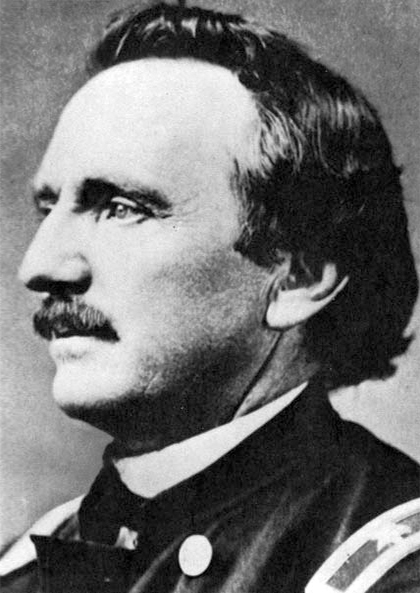 W
WThe Raynolds Expedition was a United States Army exploring and mapping expedition intended to map the unexplored territory between Fort Pierre, Dakota Territory and the headwaters of the Yellowstone River. The expedition was led by topographical engineer Captain William F. Raynolds.
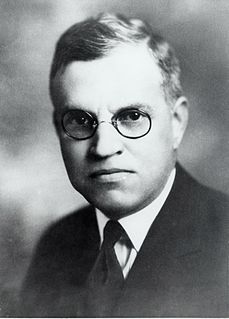 W
WRobert C. Reamer (1873–1938) was an American architect, most noted for the Old Faithful Inn in Yellowstone National Park.
 W
WAlbert, Alfred, and Alfred "Chris" Schlechten were members of a family noted for their photography of Montana, especially their images of Gallatin County, Montana, and Yellowstone National Park. Headquartered in Bozeman, Montana, brothers Alfred and Albert started a family photography business in 1900, and the business continued until the death of Alfred's son Chris Schlechten in the late 1970s. The heirs of the Schlechten family sold an extensive collection of the photographs taken by the three men to the Museum of the Rockies in 1980.
 W
WSpill is a 1991 fictional thriller by Les Standiford about a lethal biological weapon that has leaked from a crashed tanker truck in Yellowstone National Park. Agents of PetroDyne Corporation, the Denver-based chemical company responsible for manufacturing the banned agent, works with its co-conspirators in the government to cover up the incident. A Yellowstone National Park Ranger named Jack Fairchild finds himself in the middle of the coverup and does everything in his power to help his friends escape an assassin named Skanz.
 W
WThe Jones Expedition of 1873 was a survey completed during the summer of 1873 with the official purpose of finding a wagon route between the Union Pacific Railroad in the southern part of the Wyoming Territory and Yellowstone National Park.
 W
WYellowstone National Park has over 1,100 miles (1,800 km) of blazed and mapped hiking trails, including some that have been in use for hundreds of years. Several of these trails were the sites of historical events. Yellowstone's trails are noted for various geysers, hot springs, and other geothermal features, and for viewing of bald eagles, ospreys, grizzly bears, black bears, wolves, coyotes, bighorn sheep, pronghorns, and free-ranging herds of bison and elk.
 W
WThe Washburn Expedition of 1870 explored the region of northwestern Wyoming that two years later became Yellowstone National Park. Led by Henry Washburn and Nathaniel P. Langford, and with a U.S. Army escort headed by Lt. Gustavus C. Doane, the expedition followed the general course of the Cook–Folsom–Peterson Expedition made the previous year.
 W
WIsabel Bassett Wasson was one of the first female petroleum geologists in the United States, the first female ranger at Yellowstone National Park, and also one of the first interpretive rangers hired by the National Park Service.
 W
WJohn F. Yancey also known as Uncle John Yancey was a Yellowstone National Park concessionaire who operated Yancey's Pleasant Valley hotel near Tower Junction in Yellowstone from 1882 until his death in 1903.
 W
WYanceys is an unincorporated community in Yellowstone National Park in Park County, Wyoming, United States. In 1882, "Uncle" John Yancey, established a remote mail station and hotel in this area for the benefit of tourists traveling in the northern part of the park. John F. Yancey died in 1903 and his heirs ran the hotel until 1905 when it was abandoned. No buildings remain in Pleasant Valley today.When "Uncle" John Yancey, peace to his ashes, selected the site for his home and built his cabin under the shelter of the mountain at the north end of Pleasant Valley, he displayed that capacity to discover and appropriate the best things of the earth which is characteristic of American pioneers. Here game was abundant and everything that a remote, mountainous country could supply to the frontiersman was at hand. A stream of purest water ran by the door, and the open, grassy meadows were ample for the supply of hay and pasturage. The scenery is delightful, varied and picturesque. No other locality in the Park is comparable with it as a place of abode, and there is no pleasanter place in which to spend a week than at "Yancey's."
 W
WYellowstone is an American drama television series created by Taylor Sheridan and John Linson that premiered on June 20, 2018 on the Paramount Network. It stars Kevin Costner, Wes Bentley, Kelly Reilly, Luke Grimes, Cole Hauser, and Gil Birmingham. The series follows the conflicts along the shared borders of a large cattle ranch, an Indian reservation, and land developers. In June 2019, Paramount Network renewed the series for a third season, which premiered on June 21, 2020. In February 2020, Paramount Network renewed the series for a fourth season, ahead of the premiere of its third season.
 W
WYellowstone is a BBC nature documentary series broadcast from 15 March 2009. Narrated by Peter Firth, the series takes a look at a year in the life of Yellowstone National Park, examining how its wildlife adapts to living in one of the harshest wildernesses on Earth. Yellowstone debuted on BBC Two at 8:00pm on Sunday 15 March 2009 and has three episodes. Each 50-minute episode was followed by a ten-minute film called Yellowstone People, featuring visitors to the Park and locals who had assisted the production team. The series was the channel's highest-rated natural history documentary in over five years with audiences peaking at over four million.
 W
WThe Yellowstone fires of 1988 collectively formed the largest wildfire in the recorded history of Yellowstone National Park in the United States. Starting as many smaller individual fires, the flames quickly spread out of control due to drought conditions and increasing winds, combining into one large conflagration which burned for several months. The fires almost destroyed two major visitor destinations and, on September 8, 1988, the entire park closed to all non-emergency personnel for the first time in its history. Only the arrival of cool and moist weather in the late autumn brought the fires to an end. A total of 793,880 acres (3,213 km2), or 36 percent of the park, was affected by the wildfires.
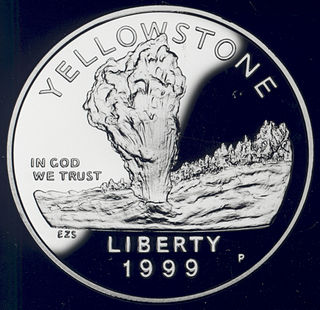 W
WThe Yellowstone National Park silver dollar is a commemorative coin issued by the United States Mint in 1999. Proceeds benefitted Yellowstone National Park and other national parks via the National Park Foundation.
 W
WYellowstone Natural Bridge is a natural arch in Yellowstone National Park, Wyoming. The arch is at an elevation of 7,983 feet (2,433 m) and can be reached by hiking a little more than a mile from the Bridge Bay marina parking lot. The arch is 51 feet (16 m) tall and was created as water eroded through the surrounding ryholite rock.
 W
WThe Yellowstone Park bison herd in Yellowstone National Park is probably the oldest and largest public bison herd in the United States, estimated in 2020 to be 4,800 bison. The bison in the Yellowstone Park bison herd are American bison of the Plains bison subspecies. Yellowstone National Park may be the only location in the United States where free-ranging bison were never extirpated, since they continued to exist in the wild and were not reintroduced. Other large free-ranging, publicly controlled herds of bison in the United States include the Tallgrass Prairie Preserve in Oklahoma, Wind Cave bison herd, the Antelope Island bison herd, the Henry Mountains bison herd in Utah, and the National Bison Range herd near Flathead Lake, Montana.
 W
WThe Yellowstone Zone of Death is the name given to the 50 sq mi (129.50 km2) Idaho section of Yellowstone National Park in which, as a result of a purported loophole in the Constitution of the United States, a criminal could theoretically get away with any crime, up to and including murder.